Almost everyone has had a hamster as a pet at one point. Can you recall the many different colors and patterns of the hamsters you’ve seen? Some colors and designs come to mind whenever we picture a hamster, while others may be more of a surprise. Ever since the 1930s, people have been breeding Syrian hamsters to achieve specific coat textures and coloring. Find out some of the rarest to the most common colors for hamsters in this article.
Coat
To start, hamsters can have different types of coats, just like some people have curly or straight hair. Often, short-haired and long-haired hamsters may be seen in pet stores and photos. Rex-coated hamsters are much less common; most people have never seen one. To achieve the desired coat type, chosen inbred hamsters create it. Due to this, hamsters with two copies of specific genes can be born with congenital disabilities.
Satin

Long-Haired Satin honey-colored hamster has a lot of shine to his coat but does have sparse hair.
©SalemStardust / CC BY-SA 4.0 – License
Satin-coated hamsters are very shiny but also have thin fur. They look very pretty but should never be bred with another satin hamster because the hair will be fragile and thin.
Short-Haired

Short-haired hamsters are easy to care for and, with a bit of patience, make excellent pets.
©Viorel Sima/Shutterstock.com
The short-haired hamsters are the most common and look closest to their wild cousins. These hamsters are the easiest to care for because their fur requires no commitment from you.
Long-Haired
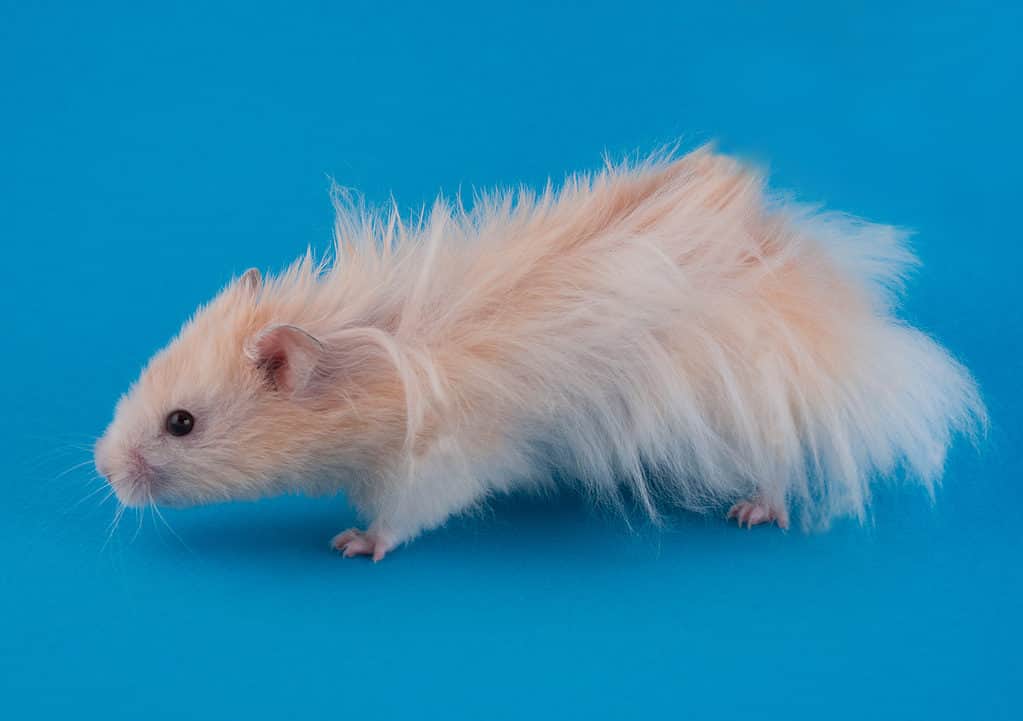
Long-haired Syrian hamsters require brushing frequently.
©Olena Kurashova/Shutterstock.com
Occasionally, long-haired hamsters are seen at pet stores and sold as Syrian Long-haired Teddy Bear hamsters. These hamsters are more difficult to care for because they require specific bedding so that it does not get stuck in their fur. They also require brushing several times a week.
Rex
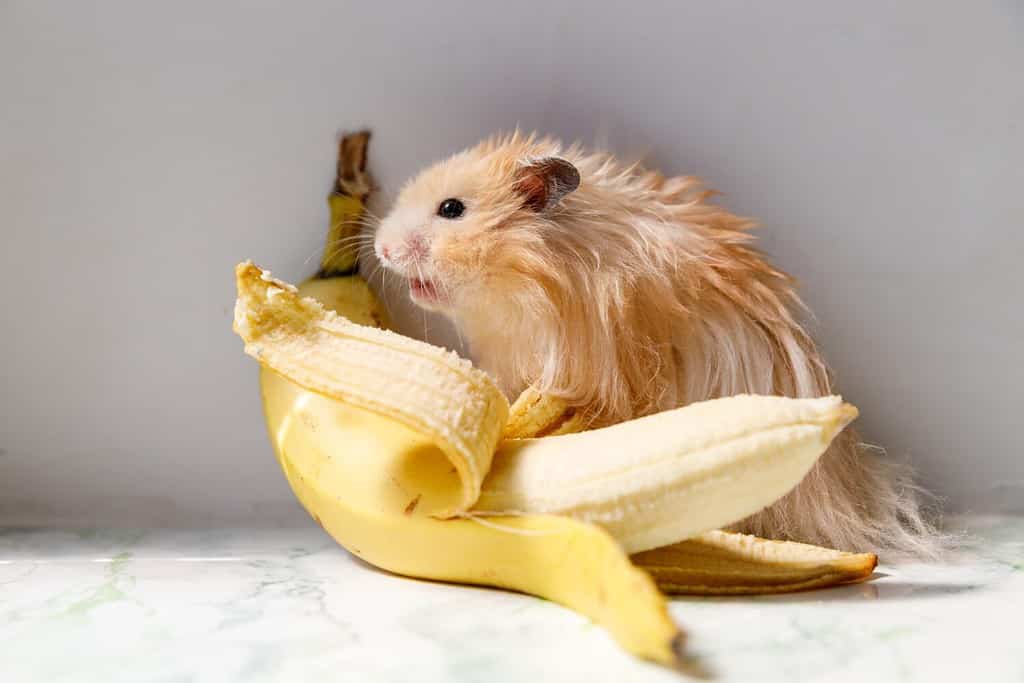
A rex hamster can have short or long hair. The hair will have a messy, frizzy look.
©Vladfotograf/Shutterstock.com
Rex-coated hamsters have wiry hair that makes them look adorable. When it becomes longer, it takes on a curly texture. These hamsters are susceptible to getting eye infections. No one should breed two rex-coated hamsters because the risk of eye issues increases.
Summary of Hamster Colors: Rarest to Most Common
| Rank | Type | Rarity |
|---|---|---|
| 1 | Satin | Common |
| 2 | Short-Haired | Common |
| 3 | Long-Haired | Uncommon |
| 4 | Rex | Rare |
Colors
When breeding hamsters, it is essential to be aware of recessive genes and not to breed two recessive gene hamsters. Birth defects, blindness, and deafness can occur with specific recessive genes. This happens because the hamsters with the genes were most likely inbred, which causes many problems and should not be attempted to create the perfect color or markings. Inbred hamsters will have shorter lifespans and may develop diseases or other issues as they age.
A hamster’s coloring can change as it becomes fully mature. A light brown hamster may end up being dark brown, and a black hamster may mature into a dark brown hamster. Hamsters mature at three months old, and the color they are at that age is what they will keep for the remainder of their lives.
Beige
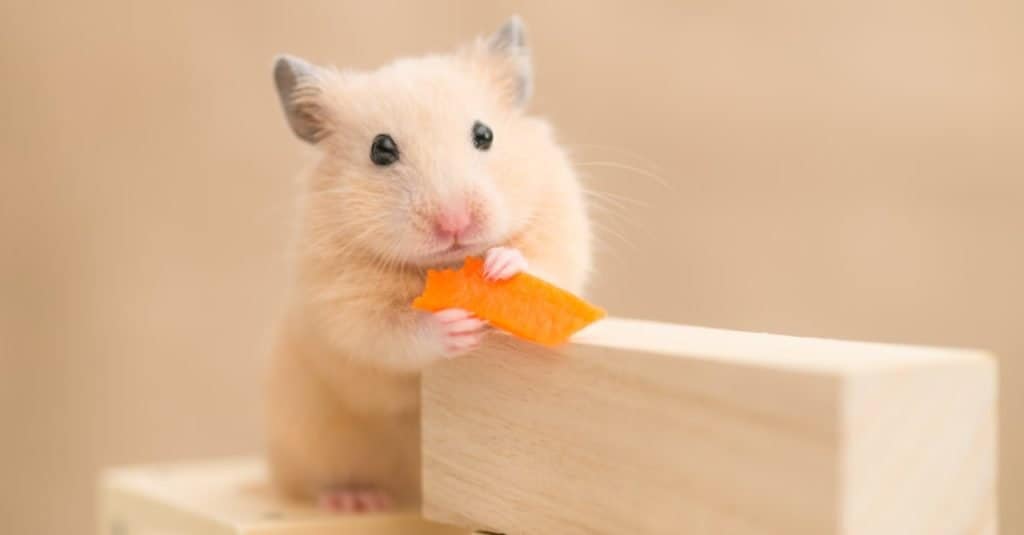
Sometimes, beige Syrian hamsters look light tan in appearance.
©stock_shot/Shutterstock.com
Beige is the rarest color hamster and isn’t easy to come by. To get this color, a rust-colored hamster must be bred with a dark grey gene hamster. The two parents have recessive genes and are also relatively rare. Since two recessive genes create this fur color, the beige hamsters may be the litter’s runts and may also have a kinked tail.
Lilac
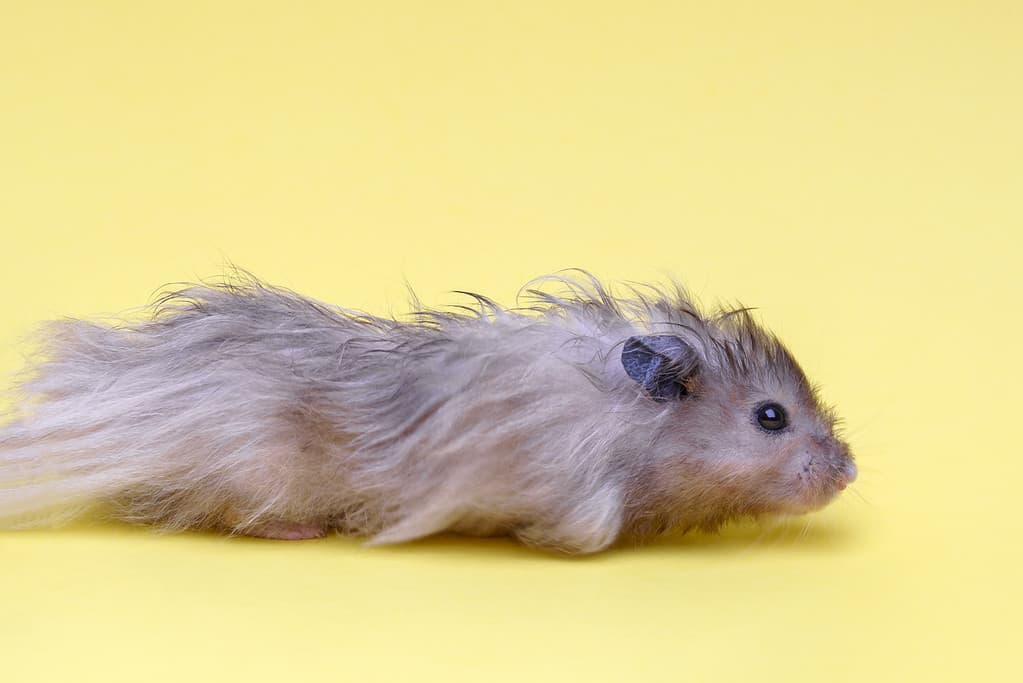
Some lilac-colored Syrian hamsters can have more purple in their grey than others.
©Tatiana Stepanishcheva/ via Getty Images
Lilac hamsters are in high demand, and their cuteness will show why. They are light grey with pinkish undertones, making them appear a pale violet color. The only way to achieve this color is to breed a dark grey gene hamster with a cinnamon gene hamster. These hamsters tend to become somewhat brown over time and make a beautiful hamster.
Albino

This partially blind, part-albino Syrian hamster is exceptionally uncommon, and true albino Syrian hamsters do not exist. Sable hamsters are pretty uncommon and can be identified by the cream-colored circles around the dark-colored hamster’s eyes.
©Fredrik1029 / CC BY-SA 4.0 – License
Albino Syrian hamsters are extremely rare. White hamsters with red eyes aren’t always albino, and so it adds a wave of confusion to breeding them. The hamster must have a gene called Ca to truly be an albino. This only occurs in Campbell Dwarf, hamsters and is extremely rare. Many other mutations can create white fur, and some even have red eyes.
Roan

A wide variety of colors can make each roan hamster look a bit different.
©Tatiana Stepanishcheva/ via Getty Images
Creating roan hamsters is not an easy feat, and breeders must use caution. If two roan hamsters breed, the result is white, eyeless, or stillborn babies. They can only be created with cream-colored hamsters. The result is white being mixed into the hamster’s base color. They usually have a darker head than the rest of their body.
Sable
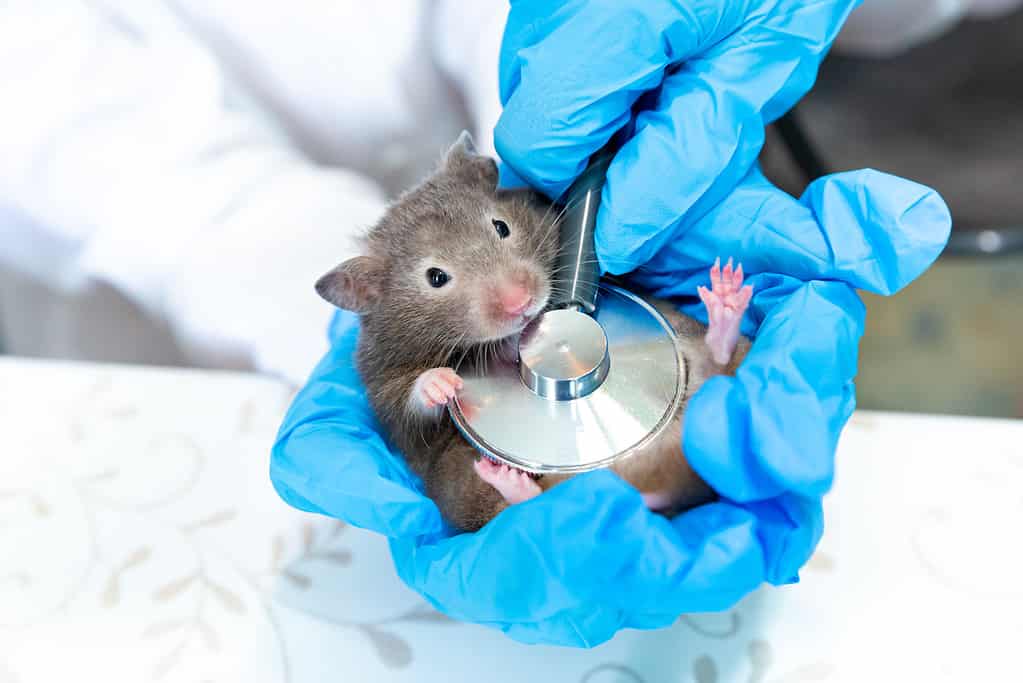
Sable hamsters are pretty uncommon and can be identified by the cream-colored circles around the dark-colored hamster’s eyes.
©Natalia Duryagina/ via Getty Images
Sable-colored hamsters are brown, sometimes a very dark brown, with a lighter-colored undercoat that shows up only around the eyes of the hamster. The sable color can look almost black on some hamsters. This color is created by breeding a hamster with the recessive cream gene and a hamster with the umbrous gene.
Blonde
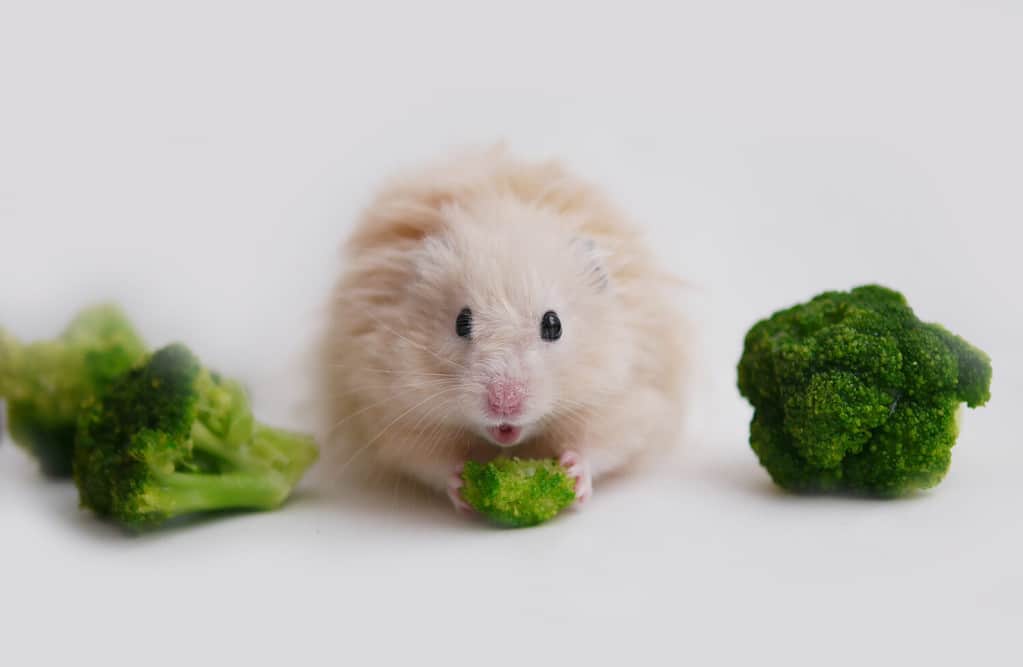
Blond hamsters are one of the most common color choices.
©tanya_morozz/Shutterstock.com
Blond hamsters are light tan with a cream-colored belly. The roots of their back fur are light grey with a bit of cinnamon coloring mixed in. These hamsters may have black or red eyes. By combining a cinnamon gene hamster with a light grey hamster, the outcome will be a blond hamster.
Chocolate
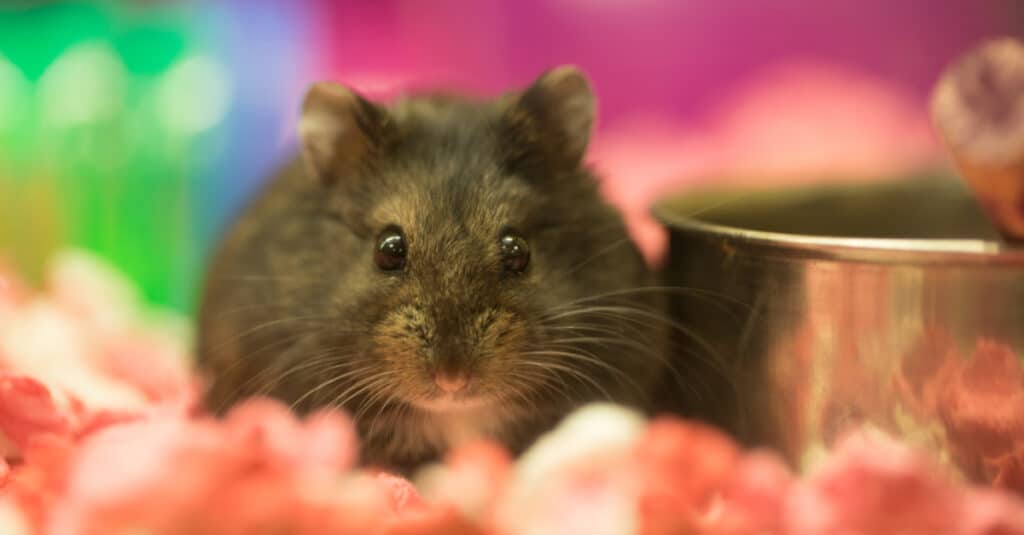
Chocolate brown-colored Syrian
teddy bear hamsters
can be deep dark chocolate brown or a lighter milk chocolate color.
©yhelfman/Shutterstock.com
Chocolate-colored hamsters are brown with black and copper highlights. They can be very light or dark brown and have banding or other features like most other colors. They even have cute brown ears.
Rust

Rust-colored hamsters are not typical and look similar to their wild cousins.
©Johannes Menge/Shutterstock.com
Rust-colored and golden-colored fur is different because the golden-colored has black cheeks and undertones, and the rust-colored hamster has brown cheeks and undertones. The base color for rust is brown.
Mink
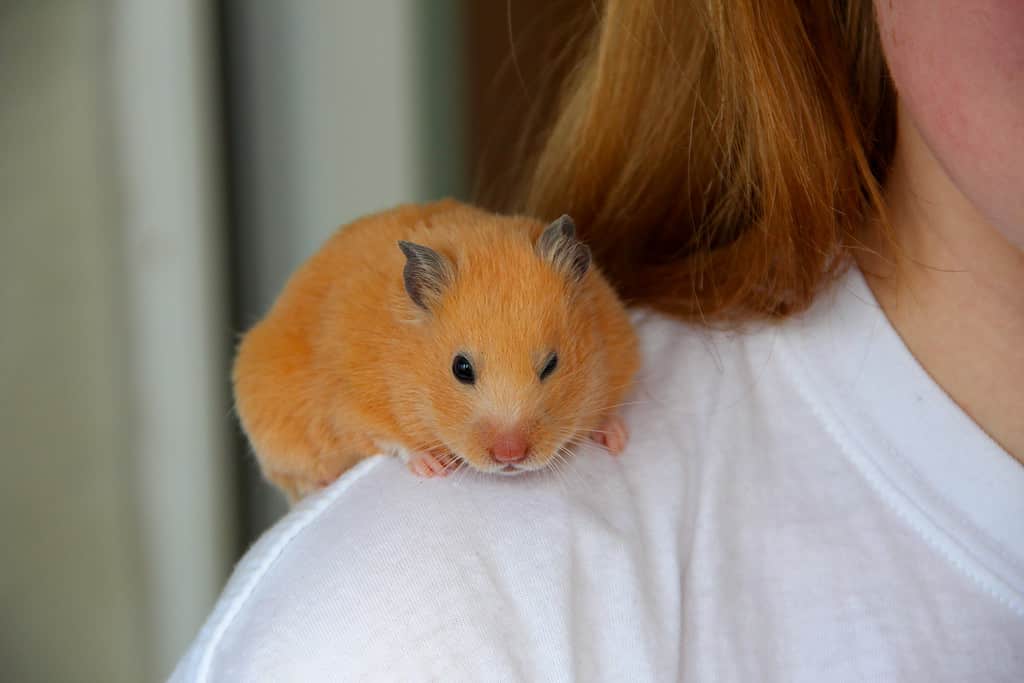
Mink-colored Syrian hamsters can be more golden or orange than brown.
©Alex Milan/ via Getty Images
Mink-colored hamsters are solid brown but may have some rust or cinnamon-colored fur mixed in. These cute little furballs have pink hands, feet, and noses, which makes them extra cute.
Black
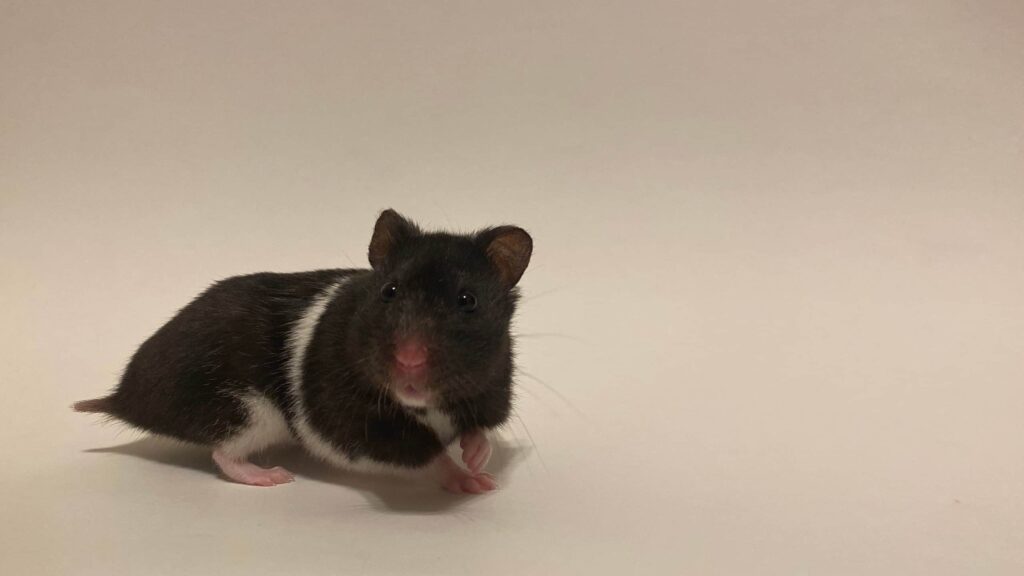
Here’s a black fancy bear hamster with a thin white saddle or band along with a white tummy.
©Shadow526/Shutterstock.com
Wild Syrian black hamsters are very close to the domesticated black teddy bear hamster. People refer to the black hamsters as being the “genuine breed.” Some indications that the black hamsters are more docile and friendly are online. This is not true. Syrian hamsters have the same temperament, though some can be hostile because of poor handling, improper housing, and stressful circumstances.
Cinnamon

Cinnamon-colored hamsters are common and show the “traditional” hamster colors, but unlike this photo, they have red eyes.
©Alexruss/Shutterstock.com
The first time the cinnamon gene was acknowledged was in 1958. The cinnamon hamster has a slate blue underfur, a rich reddish-orange upper, and a white belly. Cinnamon is a recessive gene combining many other colors to create new fur colors, like lilac.
Honey
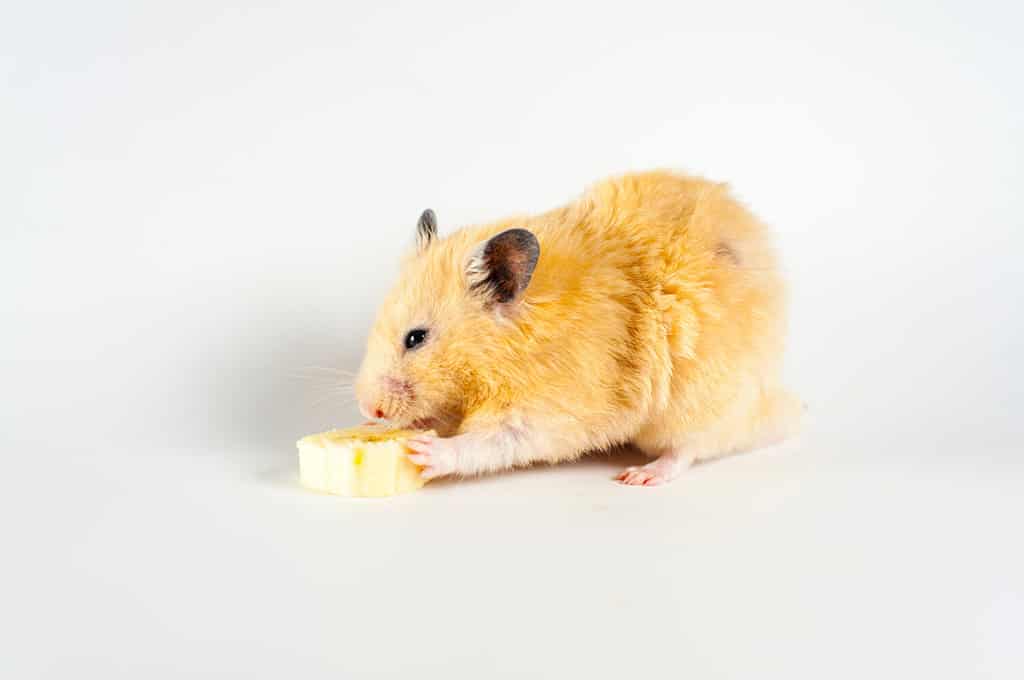
Honey-colored hamsters can have a white pattern along with their honey-colored fur.
©Jakub Csontos/Shutterstock.com
True honey-colored hamsters are not common. The ingredients for creating honey-colored hamsters can be complicated. To develop this fur color, a recessive gene cinnamon hamster needs to breed with a sex-linked yellow gene hamster. Females must inherit the yellow and cinnamon genes from both parents. The males must inherit cinnamon from both parents and yellow from their mother.
Cream
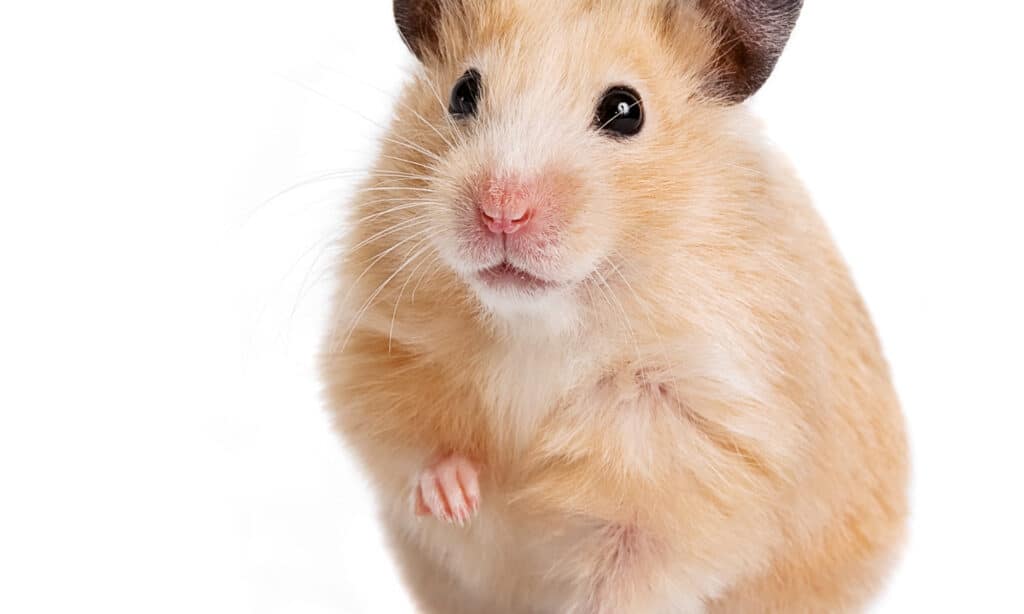
Cream-colored hamsters can have more of an apricot tint to their fur.
©Elya Vatel/Shutterstock.com
This color has a wide range that it must fall in. The cream color can be the color of sand, or it can be a milky orange color. A person can identify several subtypes of this color by the eye color being black, bright red, or dark red. Some have dark ears, while others have pink ears.
Dove
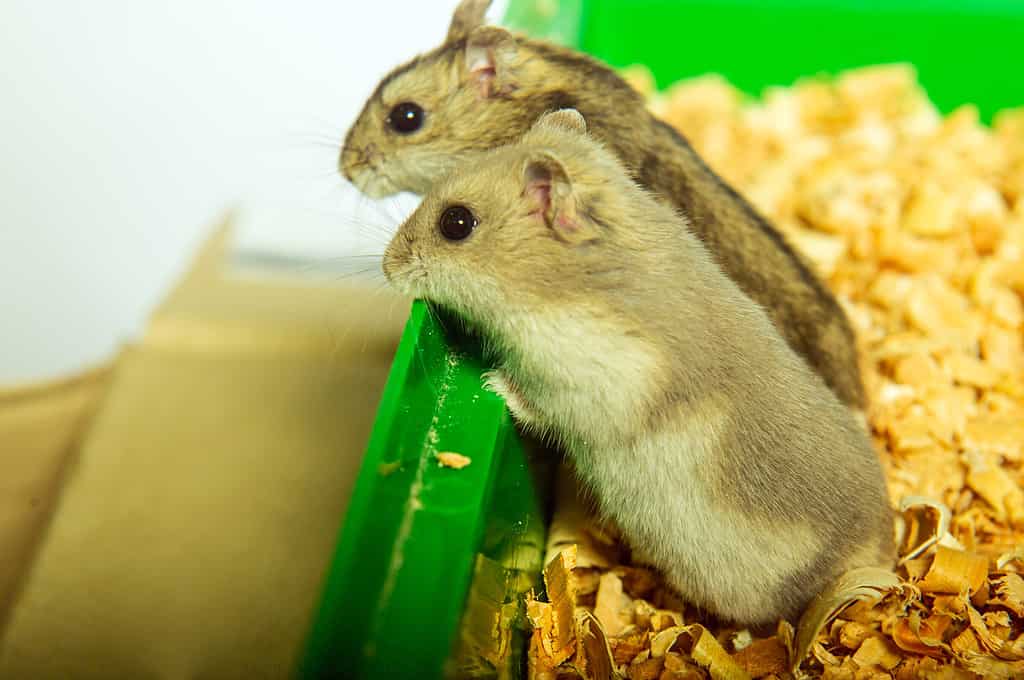
Doved-colored hamsters are light dusty brownish-grey and have red eyes, unlike this photo.
©Rus_S/ via Getty Images
Dove-colored hamsters are comparable to red-eyed black hamsters. The parents are black and cinnamon hamsters. Since the hamster has the cinnamon gene, the black fur appears to be a light sandy-grey color.
Grey

Grey hamsters can have white patterns and be darker or very light grey.
©meawtai/ via Getty Images
Light grey hamsters are extremely rare, whereas dark grey and silver are more common. Dark grey is a recessive gene that causes a kinked tail. Silver is a dominant gene that arrived in the U.S. in 1991.
Golden
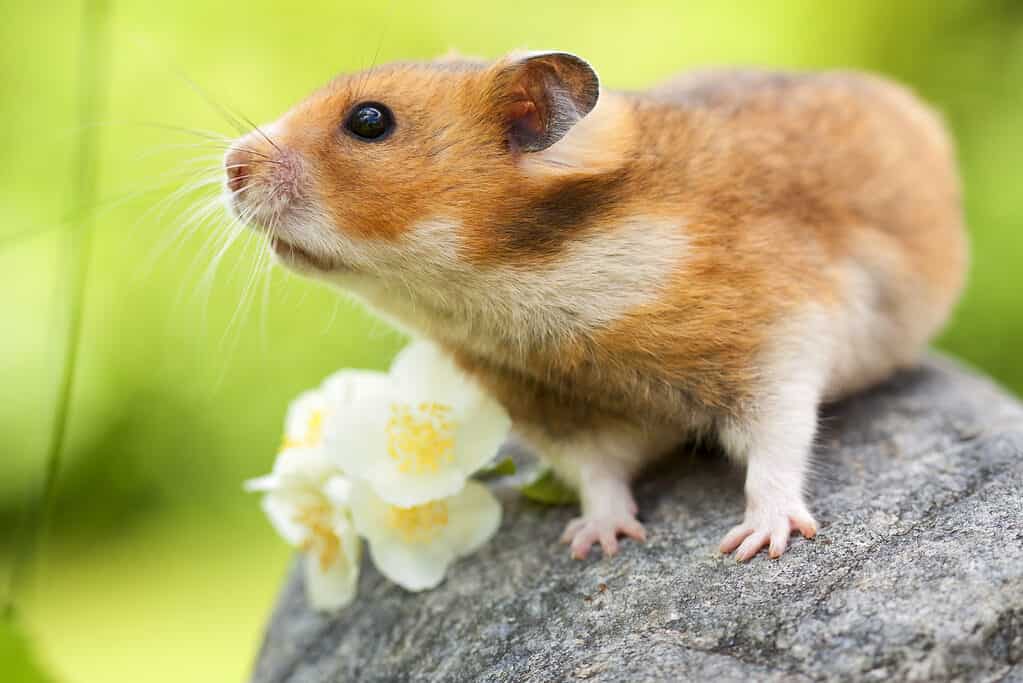
The golden Syrian hamster is the original coloring of the hamster and is widely recognized.
©Anastasia Solovykh/Shutterstock.com
Golden hamsters are black, gold, brown and white, which some people call agouti. They may also be called teddy bear hamsters. A term for Syrian hamsters, in general, is also golden hamsters. These are traditional hamsters, and other differently colored hamsters from Syria are fancy bear hamsters.
Patterns
All Syrian hamster coat patterns are from a dominant gene and, therefore, only need one copy of the gene to exist on the furry little body. Do not breed two patterned hamsters since there isn’t a way to tell if either is carrying the white belly gene. Hamster mates with the white belly gene will have offspring with deformities.
Banded
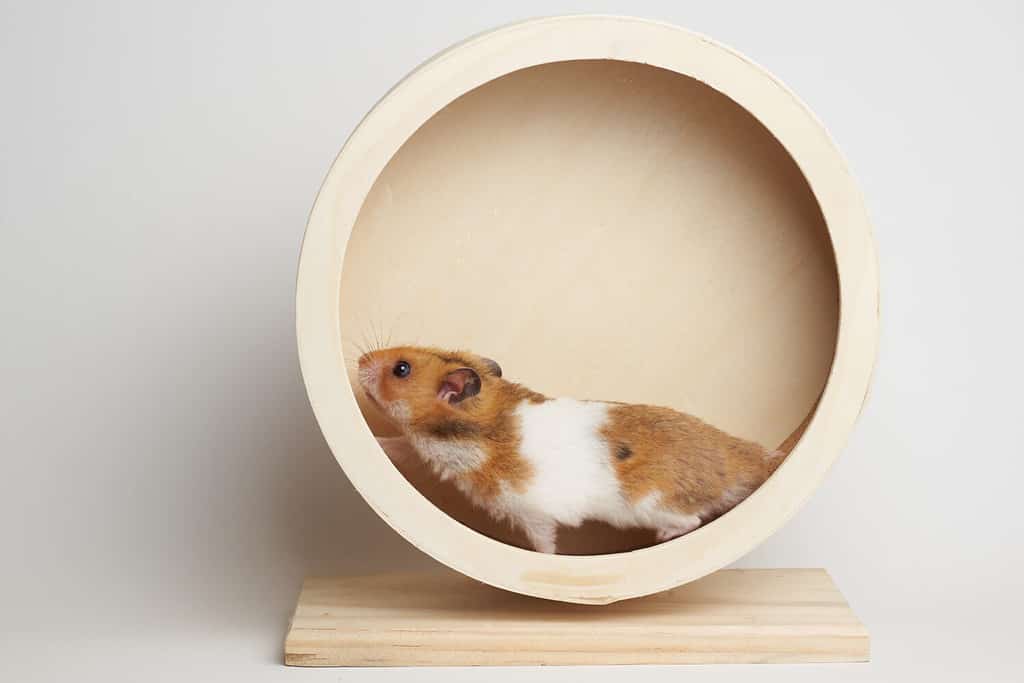
White bands are most common on banded hamsters.
©Johannes Menge/Shutterstock.com
The size and symmetry of the band can vary from hamster to hamster, as can the band’s color. Many hamsters sold in pet shops have banding around their midsections.
Dominant Spot

Dominant spot hamsters can have many different colors of spots.
©GlobalP/ via Getty Images
A dominant spot hamster has fur that is one color and spots that are a different color. They typically have a white or light body color with grey, brown, or golden flecks.
Tortoiseshell
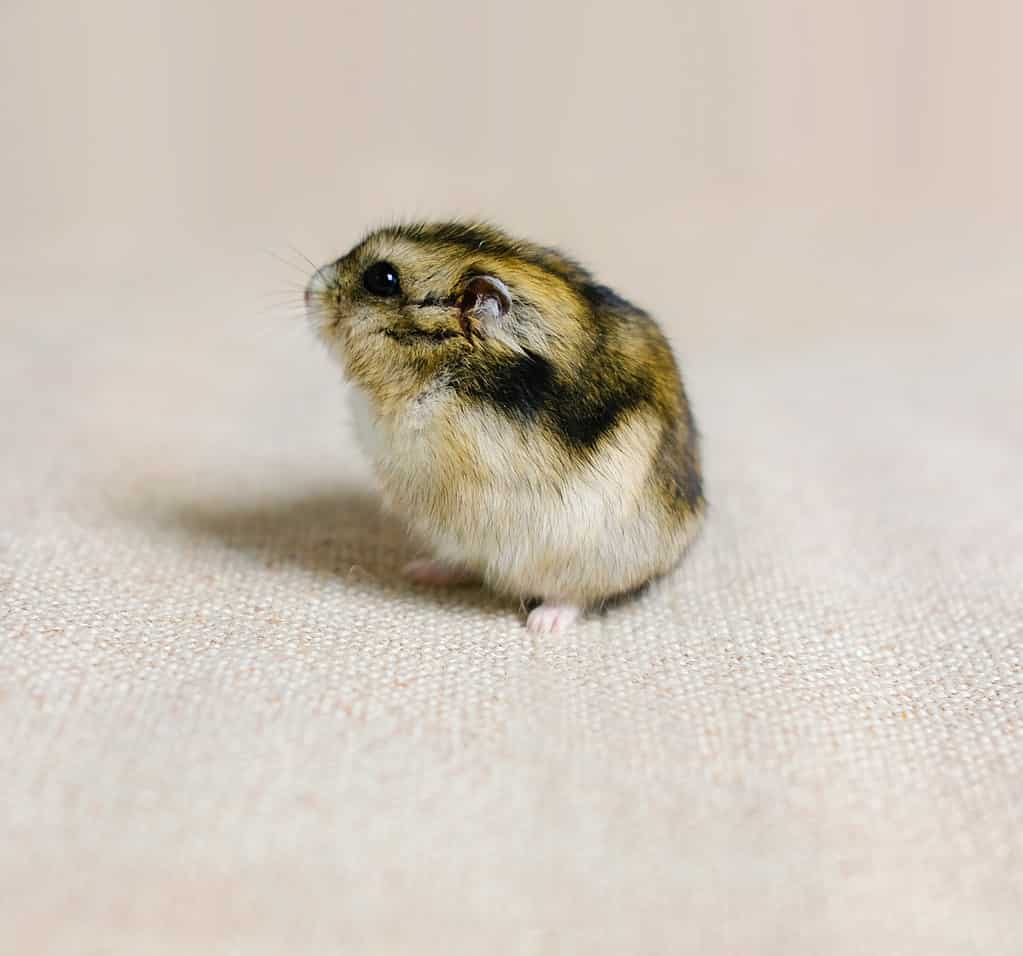
Unlike tortoiseshell cats, tortoiseshell hamsters have white on their bodies, which is not calico.
©EVGENY BUNIN/ via Getty Images
Since tortoiseshell hamsters require a sex-linked yellow gene, the affected hamsters are all females. The male can be any color, and the female offspring will still all be tortoiseshell hamsters.
Recessive Dappled
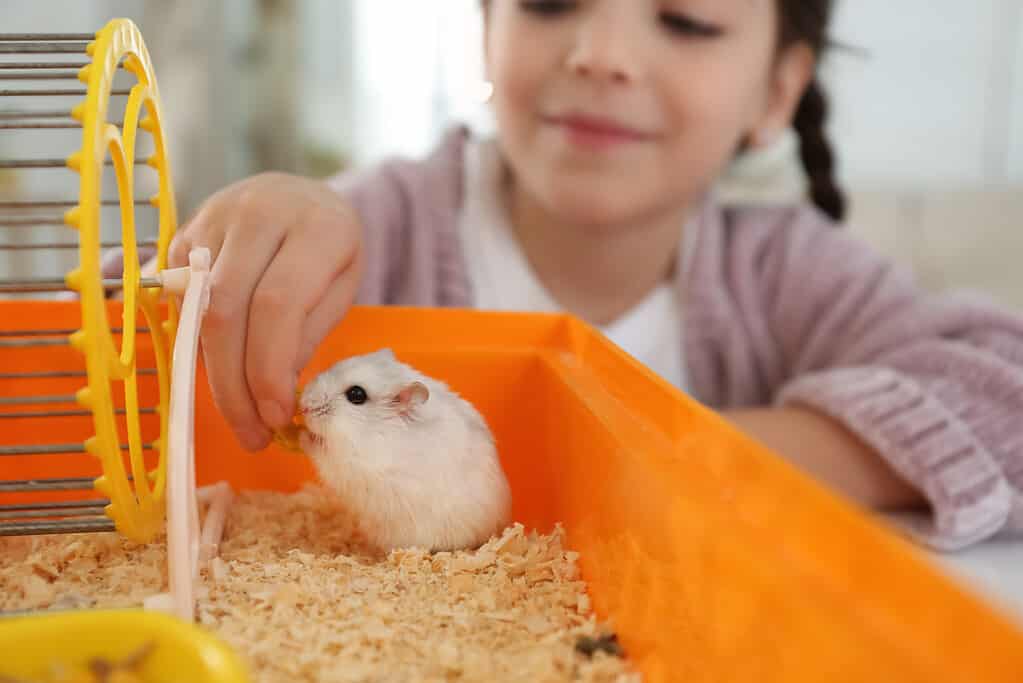
Recessive dappled hamsters have a blaze of color between their eyes and ears.
©Liudmila Chernetska/ via Getty Images
A recessive-dappled hamster is similar to the one dominant spot hamster. The only actual difference between the two hamster colors is that the recessive dappled always has a blaze of color between the eyes. The head and rear are always darker than the bodies of these hamsters.
FAQ
Q: Which breed of hamster is the rarest?
A: Syrian wild hamsters are the rarest breed. They live in the Syrian desert and almost became extinct in the 1920s.
Q: What type of hamster is the most expensive?
A: Dwarf hamster prices tend to be higher than Syrian hamsters. Male dwarf hamsters are slightly more expensive than females since they are somewhat more docile.
Q: What color do hamsters not like?
A: In scientific studies, testing has shown that hamsters are not fond of blue lights. They dislike it so much that it affects their mood.
Q: How old was the oldest hamster?
A: The oldest hamster on record in the Guinness Book of World Records is a U.K. hamster that lived for 4.5 years. Some wild hamsters may live between 5 – 8 years, though it is not on record.
The photo featured at the top of this post is © Anastasia Solovykh/Shutterstock.com
Thank you for reading! Have some feedback for us? Contact the AZ Animals editorial team.







